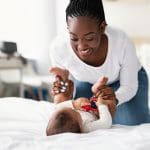I took a particular interest in this conversation as, in the summer of 2018 at the age of 29, abnormal cells were found in my cervix, which were later removed.
I attended my first recommended cervical screening when I was 25 and received a clear result.
Although I was not 100% clear what the test was looking for the first time, with my second screening I became aware of the Humanpapillomavirus (HPV). According to the NHS, there are more than 100 different strains of the virus.
Many types of HPV affect the mouth, throat or genital area. They’re easy to catch. You do not need to have penetrative sex and you can get HPV from: any skin-to-skin contact of the genital area, vaginal, anal or oral sex and sharing sex toys.
HPV has no symptoms, so you may not know if you have it.
This year for Cervical Cancer Prevention Week the focus has been placed on sharing more information about what HPV is, how it is contracted and how the body gets rid of the virus.
HPV testing is part of cervical screening.
During cervical screening, a small sample of cells is taken from the cervix and tested for HPV.
I was again interested in sharing what I learned through my experience of having a colposcopy, and later a large loop excision of the transformation zone (LLETZ), the procedure done to remove the abnormal cells, with friends and acquaintances online, as many came from Christian backgrounds.
I wanted to address the taboo topic of sexual and reproductive health in a relatable way that didn’t focus on pleasing men.
But I also pushed the conversation outside of the heteronormative paradigm, targeting my message at all people with cervixes regardless of their sexual orientation.
As a result of my experience, I believe it is imperative for all people with cervixes regardless of their sexual orientation, gender identity, ability or ethnic background to be encouraged and educated about the importance of attending their regular screening test.
I hope in the near future the barriers that exist due to the nuances of one’s identity will be removed to ensure that we all have an equal chance of living healthier and more holistic lives.





